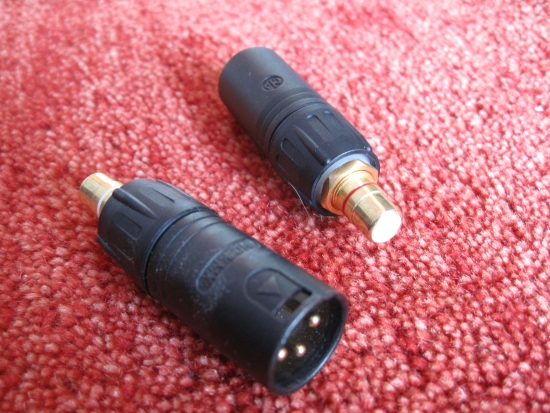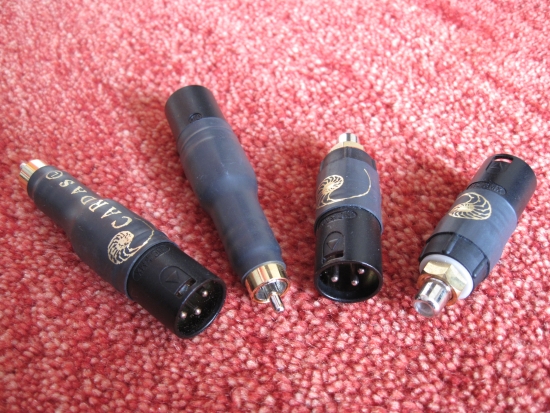JRDG Company Special – XLR pin assignment
Generic Info
For XLR connections worldwide there are two variants. Either pin 2 or pin 3 is hot, ie carrying the plus/normal/positive/non-inverting signal and the other carrying the inverting signal. With balanced equipment it doesn’t matter which pin is normal and which is reversed, as long as you use them consequently. This is relevant to because it can lead to the use of equipment in opposite phase, not only when combining Rowland gear with other brands but also when combining older and newer Rowland products because they changed the scheme. Most obviously it is important for the power amps as they feed the speakers either in phase or inverted phase thus moving the speakerunits backwards when they should move forwards. For preamplifiers it is less crucial because they, like cables, simply pass on the signal coming from the source. For cables indeed the pin assignment doesn’t make a difference as they simply transfer all pins on one side to all pins on the other side.
Older Rowland products use pin 3 for the normal signal and pin 2 for the inverted signal while the latest Rowland products, starting with the ICE power-based amps have the more common pin 2 hot arrangement.
Care should also be taken when using (supplied) XLR to cinch adapters. Here too either pin 2 or pin 3 can be connected to the normal signal. Most other brands use pin 2 for hot but Rowland (Cardas) adapters, like the amplifiers, have made a switch some time ago, with the older adapters using pin 3 and the newer adapters using pin 2 for normal signal.
It is easy to compensate for this by using the “phase” button available on all Rowland gear and most other brand’s gear. But bear in mind that by selecting this option, the sound may change due to another circuit or relay being in use. Most of the time it is best to select the proper phase at the digital level, like in the CD player or DAC.
Hot (+) pins per amplifier:
Model 102 – pin 2
Model 201 and 501 – pin 2
Current 300 series – pin 2
Older Model 302 – pin 3
Model 9 and 8 – pin 3 (rear switch switchable to pin 2)
Model 10, 12 and 112 – pin 3
Model 2 and 6 – pin 3
Model 1 and 3 – pin 3
Model 5 and 7 – not confirmed but very likely pin 3
Hot (+) pins per integrated amplifier:
Continuum – pin 2
Concerto – not confirmed but most likely pin 2
Concentra I and II – pin 3
Hot (+) pins per pre amplifier:
Corus – pin 2
Capri – pin 2
Criterion – pin 2
Consonance – pin 3
Consummate – pin 3
Coherence II – pin 3
Synergy I, II and IIi – pin 3
Cinch – XLR Adapters

Above: old style Jeff Rowland pin3 hot adapters. These came with the model 6 power amps.

Above: new style Cardas pin2 hot adapters. These are pricy but sound much better than the no-name cheapo adapters.
I use both the older types that came with the classic Jeff Rowland components and the newer types available separately from Cardas, the newer ones are easily recognised from the outside by the black shrinkwrap and rhodium plating (silvery coloured as opposed to gold plated with the older ones). The older ones, supplied with the older amplifiere, are matched to the pin 3 assignment and thus connect pin 3 to the cinch tip and pin 2 and 1 to the cinch mass. The later ones are matched to the latest Rowland gear, thus connecting pin 2 to the cinch tip and 1 and 3 to mass. Beware: there may be intermediate versions around, like black shrinkwrap connectors that are nevertheless pin 3 hot but they would probably not be rhodium plated.